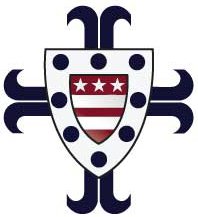The chapel
The chapel is located on Pennsylvania Route 23 in Valley Forge National Historical Park— is both a national memorial dedicated to General George Washington and an active Episcopal parish in Valley Forge, Pennsylvania. The church was inspired by a sermon preached by Episcopal priest, The Reverend Dr. W. Herbert Burk, founder and first rector of our parish. The building was designed by architect Milton B. Medary. It was listed on the National Register of Historic Places on May 1, 2017, and is undergoing an active restoration campaign.
It is physically located in Upper Merion Township.
Fr. Burk was rector of an Episcopal church in nearby Norristown. The money for the chapel was raised in small increments (nickels and dimes), and its stone walls were built a "few feet at a time." In the religious and patriotic zeal of the day, Dr. Burk was active in trying to preserve Valley Forge and in the establishment of the Valley Forge Museum of American History (the predecessor to the Valley Forge Historical Society).
On June 19, 1903, the 125th anniversary of the evacuation of the Continental Army from Valley Forge, the cornerstone was laid on property donated by the I. Heston Todd family. A small wood-framed building nearby preceded the present structure. Following President Theodore Roosevelt's visit to the site and address in 1904, the original wooden building was named the "Theodore Roosevelt Chapel." It was demolished after completion of the present chapel.
The Chapel's exterior was completed in 1917 and its interior in 1928. It serves as a wayside chapel to those who visit Valley Forge National Historical Park, and is open to the public.
History
The stained glass windows were designed, built, and installed by Nichola D’Ascenzo, a skilled artisan, an immigrant from Italy. Noted ironsmith Samuel Yellin produced the wrought iron gates, hardware, and locks. He was one of many artisans to produce sculptures, stonework, stained glass and metal work. The interior woodwork was supplied by Belgian-American cabinetmaker Edward Maene (1852–1931).
Across Valley Forge Park Road (formerly, Port Kennedy Road), standing opposite from the Chapel, is the builder's model of the Washington Monument. This obelisk marks the grave of Lieutenant John Waterman. The original Waterman gravestone had been on display in the visitor's center museum. The Bell Tower houses the DAR Patriot Rolls, listing those that served in the Revolutionary War, and the Chapel grounds hosted the World of Scouting Museum until ca. 2013.

